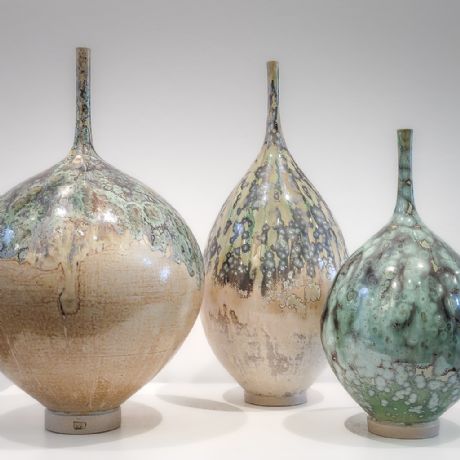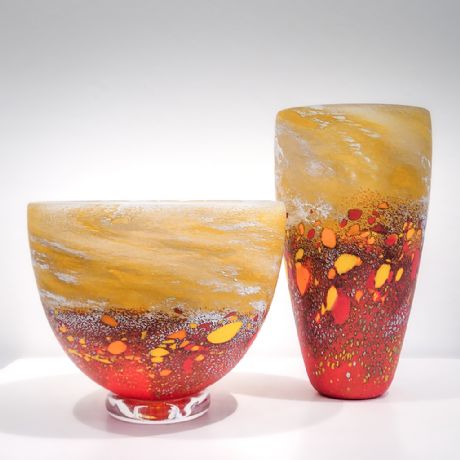NEW ARRIVAL
NEW ARRIVAL
NEW ARRIVALS ARTICLE

Ceramic
Coming from a long line of potters, he was first taught by his father from a young age and went on to study at Oaklands College and the University of Hertfordshire.
His work reflects his passion for experimentation with glazes and other decorative effects, especially crystal glazing.
Every pot, including bottles, teardrop forms, and moon jars, presents a unique surface pattern and tactile finish.

Hand-blown glass
Kalki is an Irish glass artist, designer and maker based in the Northeast of England. His passion started when he came across and started working in a small blown glass studio aged thirteen and where glass immediately made an impression on him.
“I was instantly intrigued and after hanging out there at every free moment found myself part of the studio and captivated by glass and its boundless potential for creativity.”
After finishing school he travelled to America to further his knowledge of glass and to see and work in several artists’ studios gaining an understanding of forming glass through different processes and techniques.
Upon returning he enrolled on the BA (Hons) programme in Glass, Architectural Glass and Ceramics at the University of Sunderland and graduated in 2007. In 2008 after a year travelling Australia he returned to the North East where he began working for Jane Charles Studio Glass in Newcastle and the National Glass Centre in Sunderland. Today he is based in the North East as a practising glass artist, as well as a glassblower for local studios and artists.
“To me, hot glass has so much beauty and life and I strive to share this with others through my work.
I find and draw great inspiration from many sources such as science and the natural world, travel, culture and colour as well as technique and form. Working with the molten material itself also breathes its own inspirations which I combine, explore and present together."